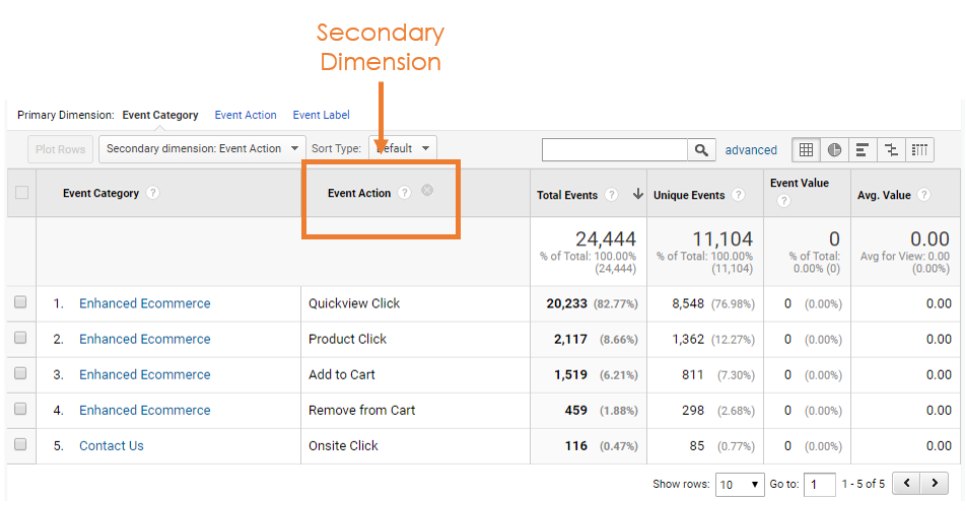Unlocking the Power of Second Measurement Analytics for Improved Information Insights and Decision-Making
In the world of information analytics, key measurements frequently take the spotlight, but the real depth of understandings exists within the realm of secondary measurements. These added data factors supply a nuanced point of view that can illuminate patterns and partnerships not easily evident initially glimpse. By utilizing the power of secondary dimension analytics, companies can introduce hidden trends, reveal relationships, and extract extra purposeful conclusions from their information. The possibility for enhanced decision-making with the usage of these second measurements is substantial, assuring a much deeper understanding of intricate information collections and paving the way for more enlightened strategic choices.
Value of Secondary Measurements
Checking out the importance of secondary dimensions in analytics introduces the hidden layers of data understandings crucial for notified decision-making in different domains. Additional measurements supply a deeper understanding of main information by using additional context and perspectives. By incorporating additional dimensions right into analytics, organizations can draw out a lot more nuanced and extensive insights from their datasets.
One secret importance of secondary dimensions is their ability to section and categorize primary data, allowing for an extra detailed evaluation of particular subsets within a dataset. This division makes it possible for organizations to determine patterns, trends, and outliers that could not be obvious when taking a look at the data all at once. Secondary dimensions aid in uncovering connections and reliances between different variables, leading to more precise projecting and predictive modeling - secondary dimension.
Moreover, additional dimensions play an essential function in enhancing data visualization and coverage. By including secondary measurements to visualizations, such as charts or charts, analysts can create much more insightful and insightful representations of data, assisting in far better communication of findings to stakeholders. Overall, the integration of additional measurements in analytics contributes in unlocking the complete possibility of information and driving evidence-based decision-making.
Secret Advantages of Using Second Dimensions
Making use of second measurements in analytics uses organizations a critical benefit by enhancing the depth and granularity of information understandings. One crucial benefit of including second measurements is the capability to segment and filter information, permitting for an extra thorough analysis of details aspects within a dataset. This segmentation enables organizations to get a more nuanced understanding of their audience, performance metrics, and various other important information points. By studying information making use of additional dimensions such as time, place, device type, or customer demographics, companies can uncover patterns, fads, and connections that may or else remain surprise.
Moreover, the utilization of secondary dimensions enhances the context in which primary information is translated. By leveraging second dimensions in analytics, companies can harness the full possibility of their data to drive much better decision-making and accomplish their service goals.
Advanced Data Analysis Techniques
A deep study innovative information analysis methods exposes advanced techniques for extracting valuable understandings from intricate datasets. One such strategy is artificial intelligence, where algorithms are employed to recognize patterns within data, anticipate end results, and make data-driven choices. This approach permits the automation of analytical design building, making it possible for the processing of big volumes of information at a much faster rate than conventional methods.
Another sophisticated method is anticipating analytics, which uses statistical formulas and artificial intelligence methods to anticipate future outcomes based on historical information. By examining patterns and patterns, companies can expect customer habits, market fads, and potential threats, encouraging them to make aggressive decisions.
Moreover, message mining and sentiment analysis are important methods for drawing out insights from disorganized data resources such as social media sites remarks, customer evaluations, and study actions. By evaluating message data, companies can understand customer point of views, determine emerging fads, and boost their solutions or items based upon feedback.
Enhancing Decision-Making With Additional Measurements

Enhancing decision-making through second measurements makes it possible for businesses to make even more notified and targeted calculated selections. As an example, by segmenting consumer data based on secondary measurements like purchasing background or interaction degrees, business can tailor their marketing approaches to details audience segments, causing boosted conversion prices and customer fulfillment. In addition, additional dimensions can aid recognize correlations and partnerships between various variables, allowing organizations to make data-driven choices that drive development and earnings.
Applying Additional Dimension Analytics
When incorporating additional dimensions in analytics, companies can open deeper understandings that drive critical decision-making and enhance general efficiency. This requires understanding the particular concerns the company looks company website for to answer and the information factors needed to address them.

Additionally, companies must take advantage of advanced analytics tools and modern technologies to improve the process of including secondary measurements. These tools can automate information handling, evaluation, and visualization, allowing organizations to concentrate on analyzing insights instead than manual data manipulation.
Verdict
In conclusion, second measurement analytics play a critical role in boosting data understandings and decision-making procedures. By utilizing innovative information evaluation strategies and executing additional dimensions properly, companies can open the power of their data to drive calculated company decisions.
In the world of information analytics, key dimensions commonly take the spotlight, yet the true depth of understandings lies within the world of second measurements.Making use of additional measurements in analytics uses organizations a calculated benefit by boosting the depth and granularity of data understandings. By leveraging second dimensions in analytics, organizations can harness the complete capacity of their data to drive far better decision-making and accomplish their service objectives.
Implementing data recognition processes and routine my explanation audits can assist preserve data top quality and integrity.
By utilizing innovative data analysis techniques and executing secondary measurements successfully, organizations can open the power of their data to drive tactical service decisions.